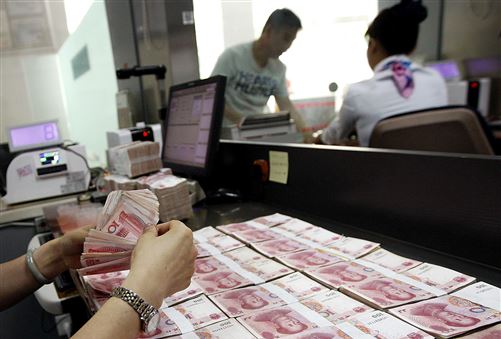-
Tips for becoming a good boxer - November 6, 2020
-
7 expert tips for making your hens night a memorable one - November 6, 2020
-
5 reasons to host your Christmas party on a cruise boat - November 6, 2020
-
What to do when you’re charged with a crime - November 6, 2020
-
Should you get one or multiple dogs? Here’s all you need to know - November 3, 2020
-
A Guide: How to Build Your Very Own Magic Mirror - February 14, 2019
-
Our Top Inspirational Baseball Stars - November 24, 2018
-
Five Tech Tools That Will Help You Turn Your Blog into a Business - November 24, 2018
-
How to Indulge on Vacation without Expanding Your Waist - November 9, 2018
-
5 Strategies for Businesses to Appeal to Today’s Increasingly Mobile-Crazed Customers - November 9, 2018
China allows yuan currency to drop for third day
Beijing broadly has stuck to its commitment to set the yuan’s daily reference exchange rate more in line with market levels, after the central bank devalued its currency by 1.9% against the dollar on Tuesday.
Advertisement
Echoing similar sentiments to those expressed in a statement released Wednesday evening, the bank noted that a strong economic environment, sustained trade surplus, sound fiscal position and deep foreign exchange reserves will provide “strong support” to the exchange rate, according to Reuters.
They say Beijing has indicated it is taking steps toward market-determined exchange rate – something that even China’s biggest critics in Washington have been demanding for years.
ANALYST VIEW: “Clearly the central bank doesn’t want the currency to depreciate too fast and it is more than willing, and able, to intervene in order to ensure this”, said Craig Erlam, senior market analyst at OANDA.
But with China continuing to peg the yuan lower on Wednesday, dealers now see this as part of a series of moves to devalue it.
China’s move to stabilize its currency comes after concerns about a slowing growth rate, falling retail sales and a rocky stock market have plagued the country in recent months.
But Thursday’s rate of 1% down against the dollar was a smaller margin than the shock cuts earlier in the week.
The value of the yuan has gradually returned to market levels as the discrepancy between the central parity rate and the actual trading rate has been corrected after declines in the past few days, Zhang Xiaohui, assistant governor of the PBOC, said during a press conference here.
“The argument that China is trying to spur growth by weakening its currency to spur exports does not strike us as very convincing”, said Paul Gruenwald, S&P’s chief economist for Asia-Pacific. Asian stock markets stabilized Thursday after a two-day sell-off sparked… China allows the yuan to trade in a 2% band around its daily fix. Spot gold rose as much as 1.2 per cent to its highest since July 20 at $US1,121.40 an ounce and was up 0.9 per cent at $US1,119.10. And shifting to a “market-driven” exchange rate does not mean giving up control entirely. If Chinese exports become more price competitive, China could boost imports of Korean-made intermediate goods.
Advertisement
The US has, in the past, sharply criticized China for keeping the value of the yuan artificially low, thus propping up its exporters at the expense of their US counterparts.





























